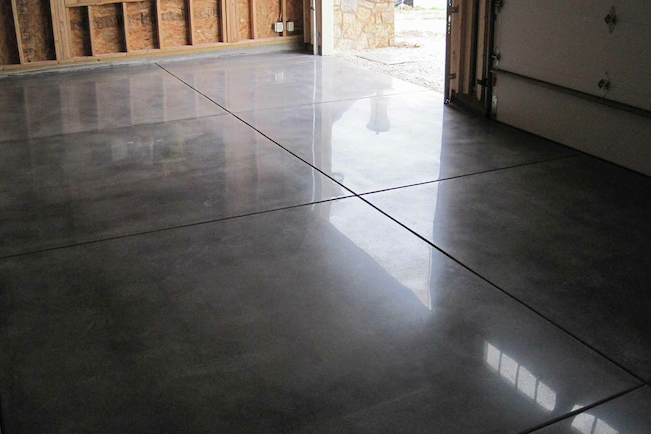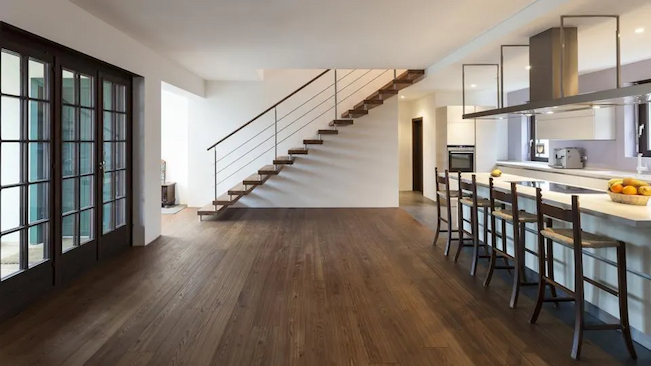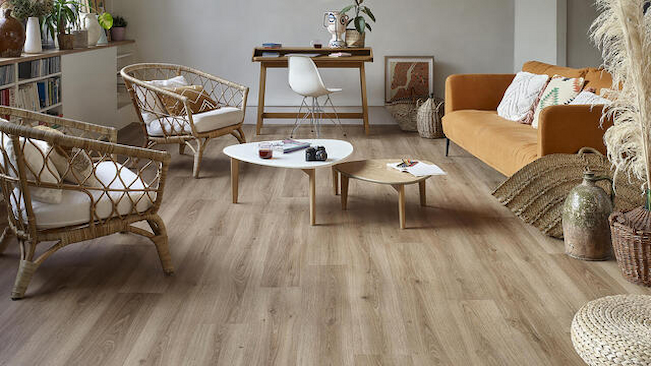Flooring surfaces play a pivotal role in homes and workplaces, serving as a foundation while enduring constant daily wear and tear. Preserving their quality and appearance is essential to maintaining the overall visual appeal and functionality of any space.
However, not all floors are equal, and each type demands tailor-made protection methods to preserve its integrity over time. Whether you have carpet, concrete, or other flooring types, understanding the ideal care solutions is key. This knowledge ensures your surfaces remain in top condition, minimising maintenance costs and enhancing durability.
Concrete Floors

Concrete floors, known for their durability, versatility, and industrial appeal, can benefit greatly from various protective measures to enhance their longevity and aesthetics. Applying durable decorative concrete coatings is one effective way to shield your flooring. These coatings not only elevate the visual appeal of concrete surfaces, but also provide crucial protective benefits, extending the lifespan of the flooring.
One primary advantage of decorative floor coatings is their ability to guard against wear and tear. Concrete floors in commercial, industrial, or residential spaces endure significant foot traffic, abrasions, and potential chemical exposure. Applying protective coatings forms a resilient barrier, shielding the concrete from scratches, impacts, and stains. This feature prevents premature degradation, ensuring the floor remains durable and functional over time.
Moreover, these coatings contribute to increased resistance against moisture intrusion. Concrete is porous and susceptible to water damage, leading to cracks, mould growth, and structural weakening. Decorative coatings act as a sealant, preventing water absorption and reinforcing the floor’s resistance to moisture-related issues. This protective measure is particularly beneficial in spaces like basements, garages, or warehouses where the presence of moisture poses a threat to the integrity of the flooring.
In addition to protection, decorative concrete coatings offer versatility in design. They come in various colours, patterns, and finishes, allowing customisation to suit diverse aesthetic preferences. Whether opting for a high-gloss finish, a matte look, or incorporating decorative elements like flakes or textures, these coatings provide an opportunity to transform ordinary concrete floors into visually appealing focal points within a space.
Also, certain coatings even contain additives or technologies that enhance safety features. For instance, anti-slip coatings can be applied to prevent accidents caused by slippery surfaces, ensuring a safer environment, especially in areas prone to spills or moisture.
Aside from decorative coatings, other protection strategies include sealing using penetrating sealants to prevent moisture ingress, avoiding harsh chemicals, controlling moisture to prevent damage, and conducting routine inspections for early detection and repair of cracks, chips or scratches.
Hardwood Floors

Protecting hardwood floors involves several precautions to maintain their allure and durability. Hardwood is sensitive to excessive moisture, scratches from sharp objects, and direct sunlight, which can cause discolouration. That said, to protect your hardwood flooring surfaces effectively, make sure you’re cleaning them routinely with a soft-bristled broom or vacuum cleaner to prevent scratches caused by debris.
Use protective pads under furniture, avoid dragging heavy items, and promptly clean spills. Also, consider maintaining consistent humidity levels by using a humidifier or dehumidifier to prevent warping or shrinking. Additionally, think about applying protective coatings like polyurethane or wax to add a resilient layer, enhancing the floors’ durability.
Tile Floors
If you have tile floors, it’s essential to know they are sensitive to certain things. For example, you should avoid using harsh or abrasive cleaners as they can damage the tiles’ surface. Additionally, be cautious with acidic substances, like vinegar or lemon juice, as they might affect the grout or certain types of tiles. Sharp or heavy items can scratch or chip the tiles, so use protective pads under furniture legs and handle heavy objects carefully.
Also, excess moisture or standing water can harm both your tiles and grout, causing potential damage. That is why you need to routinely check the grout lines for any signs of wear and reseal them promptly to ward off moisture-related issues. Lastly, follow manufacturer recommendations for tile-specific cleaners and consider professional cleaning from time to time to maintain their shine and pristine condition.
Carpet Floors
To maintain your carpet floors, start by vacuuming regularly, focusing on high-traffic areas. Placing doormats at entrances can minimise tracked-in dirt while applying a carpet protector can further enhance stain resistance. Treat spills promptly by blotting them with a clean cloth and using a mild detergent solution.
Make sure you rotate the furniture periodically to distribute wear evenly and avoid prolonged exposure to direct sunlight, as it can cause fading. You should also think about scheduling professional carpet cleaning every 12-18 months to remove embedded dirt and rejuvenate the fibres. By consistently implementing these care practices, you can effectively preserve your carpet’s appearance and extend its lifespan, ensuring a clean and inviting living space.
Vinyl/Laminate Floors

Taking care of vinyl or laminate floors involves simple yet essential steps. Begin by routinely sweeping or vacuuming to eliminate dirt and debris that might accumulate. When cleaning, opt for a damp mop using a cleaner recommended by the manufacturer to ensure proper care without damaging the surface.
Refrain from using too much water to prevent it from penetrating the seams, potentially leading to damage. Prioritise placing felt pads beneath furniture legs to prevent scratching and protect the floor’s integrity. Additionally, exercise caution with abrasive cleaners that can harm the surface. Consider placing welcoming mats at entryways to minimise tracked-in dirt and reduce wear.
Tending to spills promptly prevents staining, ensuring the floors retain their pristine look. Also, avoiding heavy item dragging and considering protective furniture coasters can contribute significantly to preserving the beauty and durability of your vinyl or laminate floors for years to come.
How Do You Cover Up Scratches on The Floor?
To cover up scratches on the floor, start by cleaning the scratched area to remove any dirt or debris. For hardwood floors, use a wood filler that matches the floor’s colour and apply it to the scratch, following the manufacturer’s instructions. For laminate or vinyl floors, consider using a colour-matched repair kit or a special marker or putty designed for these surfaces.
Apply the product carefully to fill the scratch, then wipe away any excess. For tile floors, try using a touch-up kit or coloured grout marker to camouflage minor scratches. Always test any product in a discreet area first to ensure it matches and produces the desired result.
























